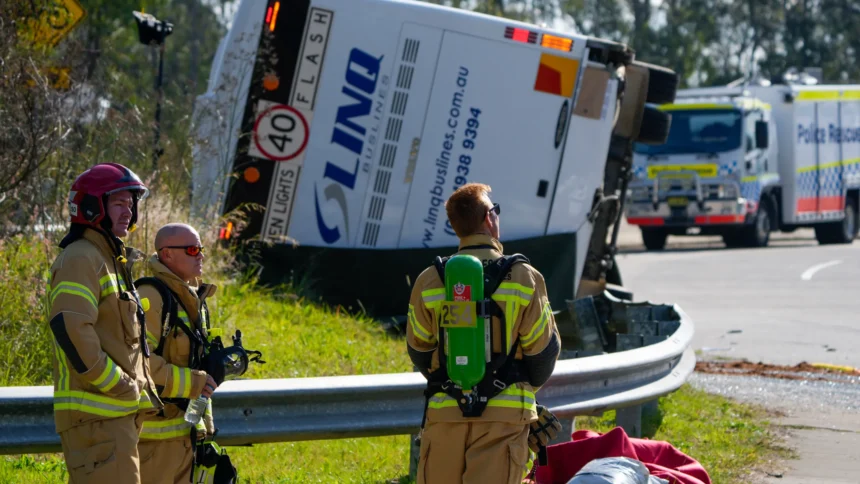Public transport is often considered one of the safest ways to travel. Buses, in particular, carry thousands of passengers each day across cities and regional routes. But when a bus accident does happen, the aftermath can be just as complex—and just as serious—as any road collision involving private vehicles.
If you’ve been involved in a bus accident, whether as a passenger, pedestrian, or another road user, it’s important to understand how approved bus accident claims work and what your rights are.
Bus accident claims can differ from standard vehicle collisions, both in terms of who is liable and how the compensation process unfolds. This article outlines what makes these claims unique, how to begin the legal process, and why experienced guidance—such as that from QLD road accident lawyers—can be critical.
Why Bus Accident Claims Matter
When a bus is involved in an accident, the injuries can be significant due to the number of people involved, the lack of seatbelts, and the sheer size of the vehicle. Passengers may be standing, walking, or unrestrained at the time of the impact, which increases the chance of harm. Others affected could include pedestrians, cyclists, or drivers of smaller vehicles.
The physical and emotional trauma following such an event can be overwhelming. Medical costs, time off work, psychological stress, and long-term recovery all place burdens on victims. That’s why the legal system provides pathways for people to seek compensation through structured and approved bus accident claims.
These claims are not just about financial recovery—they’re about accountability and support for those injured due to the negligence or failure of another party, whether that’s the bus driver, another motorist, or even a public transport authority.
Who Can Make a Claim?
Claims aren’t limited to passengers on the bus. You may be eligible to make a claim if you were:
- A passenger injured while riding the bus
- A pedestrian struck by a bus
- A cyclist or motorist involved in a collision with a bus
- Someone injured due to sudden braking or swerving
Eligibility usually depends on proving that the injury was caused by the negligence of another party, and that the accident resulted in physical, emotional, or financial harm.
What Needs to Be Proven
For a claim to be successful, several elements must be clearly demonstrated:
- Duty of care – That the bus operator or another party had a responsibility to ensure your safety.
- Breach of duty – That this responsibility was not met (e.g., reckless driving, failure to maintain the bus, ignoring traffic laws).
- Causation – That the breach directly caused your injury.
- Loss or damage – That you suffered identifiable harm—medical expenses, income loss, or psychological trauma.
Supporting evidence is essential: medical records, witness statements, official accident reports, and photos can all play a role in strengthening your case.
Common Causes of Bus Accidents
Understanding the cause of the accident can also clarify who may be held liable. Some frequent contributors to bus accidents include:
- Driver fatigue or distraction
- Poor road conditions
- Mechanical failure or lack of maintenance
- Aggressive or negligent driving by another road user
- Sudden stops or sharp turns causing passengers to fall
These factors highlight the need for detailed investigation, which is why professional legal support can be so valuable.
Filing a Claim: What the Process Looks Like
The claims process typically begins with reporting the accident and seeking medical attention. From there, victims are advised to document every detail—injuries, treatments, financial losses, and personal impacts.
If a public transport authority or government entity is involved, the process can be more complex due to additional regulations or procedural requirements. This is where lawyers experienced in this specific area, such as QLD road accident lawyers, can be particularly helpful. They can assist with paperwork, deadlines, liability issues, and settlement negotiations.
Time limits also apply. In Queensland and most other jurisdictions, strict deadlines exist for filing claims. Missing these can mean losing your right to compensation, so acting quickly is crucial.
What Compensation May Cover
An approved claim may result in compensation for a wide range of damages, including:
- Emergency medical treatment
- Ongoing healthcare and rehabilitation
- Psychological therapy
- Lost wages or reduced earning capacity
- Travel expenses related to treatment
- Pain and suffering
Each case is different, and compensation amounts depend on the severity of the injury and its impact on your life. Some claims may settle quickly; others, especially those involving long-term disability or contested liability, can take more time.
Challenges in Bus Accident Cases
One major challenge in bus accident claims is identifying who is liable. Is it the driver, the company, the transport authority, or another vehicle’s driver? Determining fault can be complicated when multiple parties are involved.
Another issue is that public transport providers and insurers may push back on claims or offer low settlements. This is where legal representation can ensure your claim is taken seriously and pursued thoroughly.
Professionals like QLD road accident lawyers understand the tactics used in these cases and know how to counter them. They can provide objective advice and help you avoid common pitfalls—such as underreporting your injuries or accepting a premature settlement.
Final Thoughts
Bus accidents can be traumatic and confusing. With many potential parties involved and specific procedures to follow, the path to fair compensation can feel daunting. But understanding your rights, documenting your injuries, and acting quickly are the first steps toward recovery.
Approved bus accident claims offer a way for victims to regain control, seek justice, and recover losses. Whether you’re dealing with physical injuries, emotional distress, or both, knowing there’s a structured legal process to support you can provide some peace of mind.
If you’re unsure about your options, don’t wait. Learn what you’re entitled to and make sure your voice is heard.
Related Articles:
Tour Bus Crashes in Northeastern Thailand, Injuring 36 Passengers














